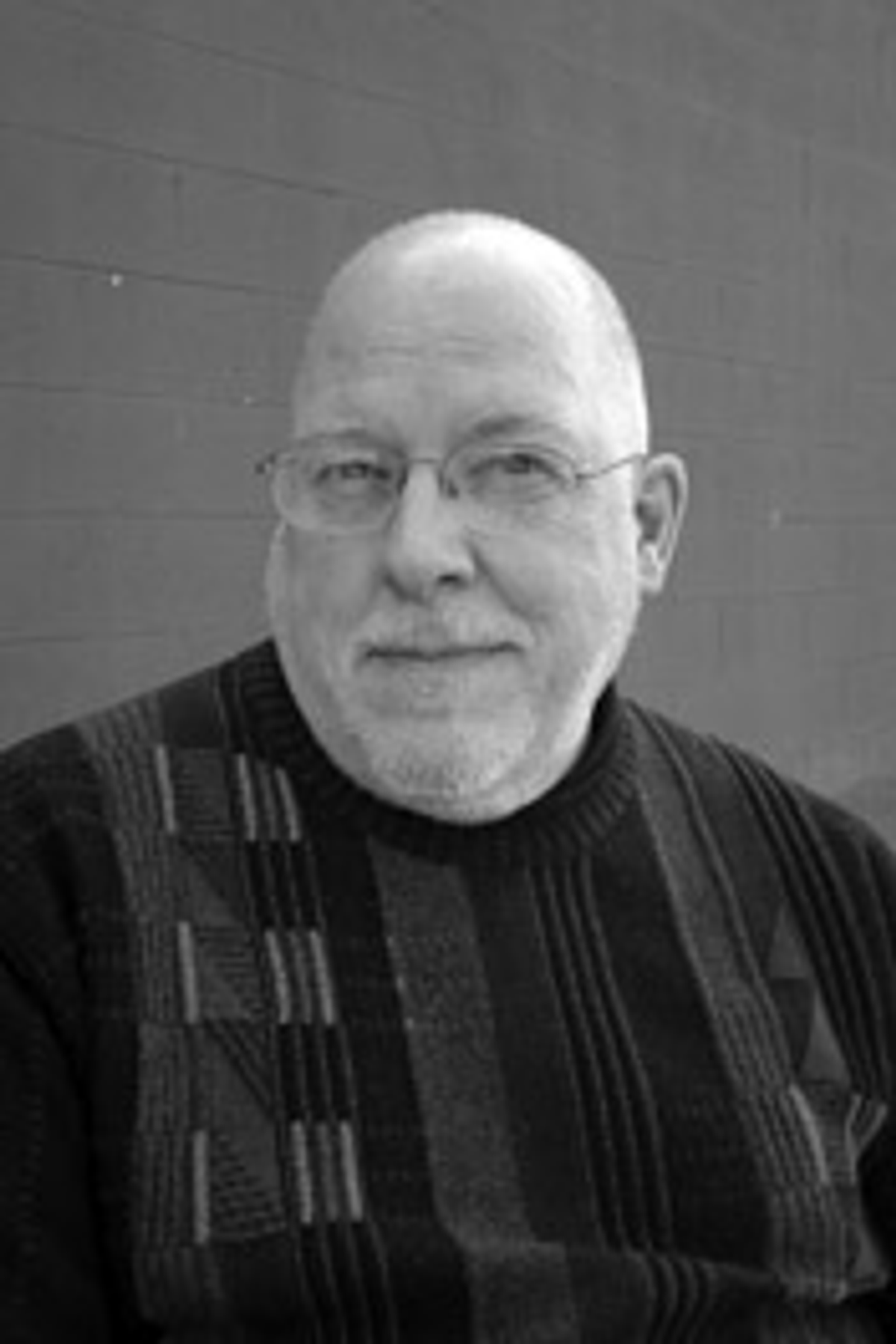
William Padgett
contributor to 5 posters
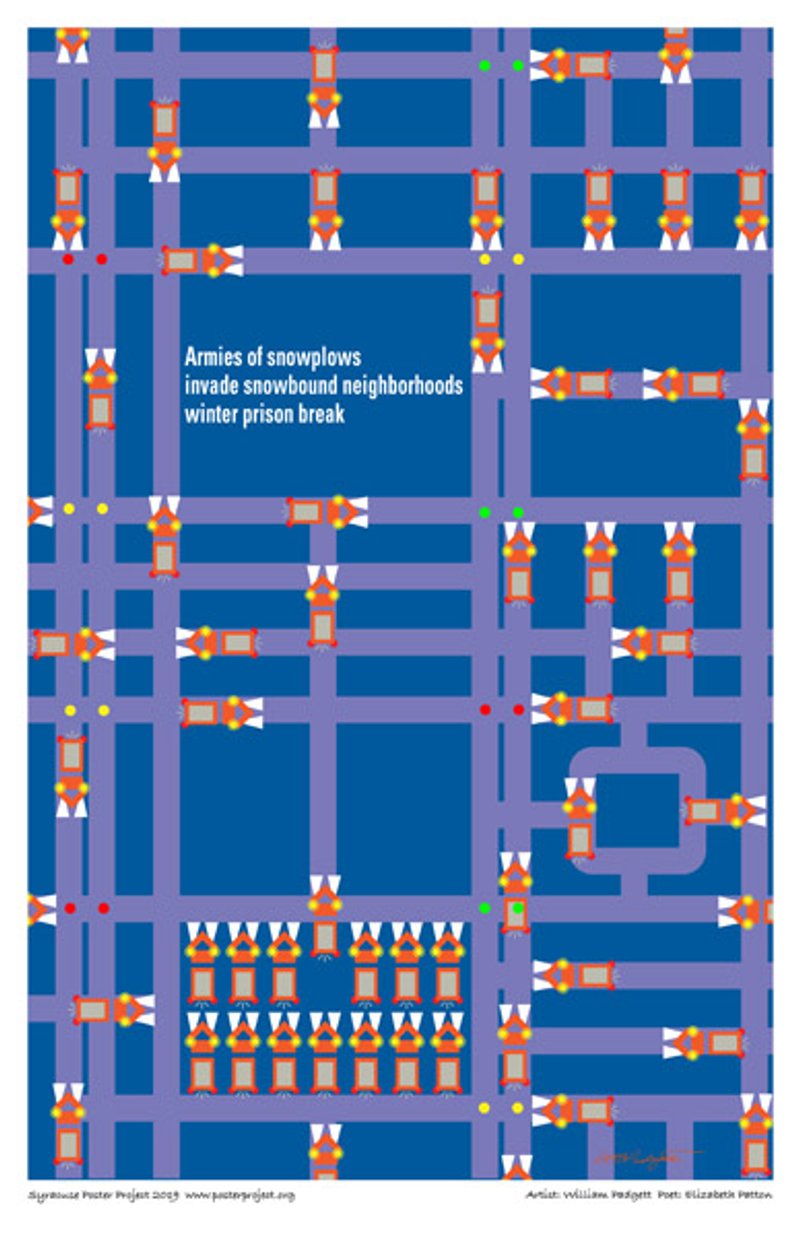
Artist
I selected this wonderful haiku by Elizabeth Patton because it had great keywords, which helped trigger my imagination, like “armies, “invade,” and “prison break.” These words brought up a stark contrast between military precision and the chaos of escaping convicts. I chose a nighttime setting with a downward bird's eye view of the grid of city streets below using the complimentary colors of blue and orange. The compositional organization and inspiration came to me in the forms of the classical Golden Mean (or Golden Section) and Piet Mondrian's abstract painting, “Broadway Boogie-Woogie.” Then I created the poster in Adobe Illustrator.

Poet
For almost 50 years I have been a visual artist, an illustrator and a designer. I am always trying to reduce things to their essence, looking for the simple answers. During the past twenty years, I have also been writing poetry. What I like about writing haiku are their constraints and the quest for the simple essence. This haiku gives just enough information for the reader to capture the moment, place, and feeling; they fill in the rest. Now there is a relationship between the poem and reader.
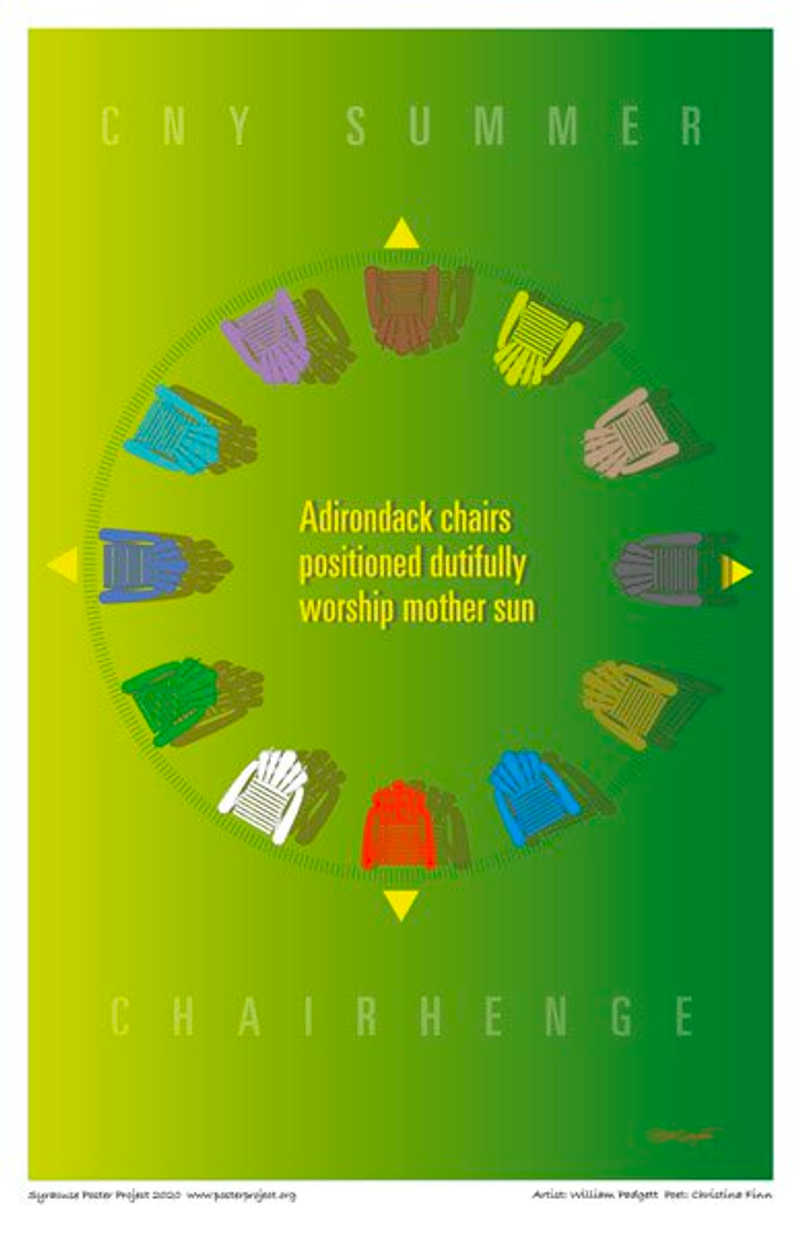
Artist
I selected Christina Finn's haiku because it hit a responsive chord with me. Just recently I lost a friend and colleague, Gary Trento, who painted a painting that hangs in my house at the bottom of my staircase. In it are two empty Adirondack chairs, looking off somewhere, while resting in front of a large wall of lush evergreen trees. I see that painting every day and it constantly reminds me of a wonderful poem by Billy Collin titled “The Chairs That No One Sits In,” in which Adirondack chair pairs are awaiting their occupants. Both Gary and Billy beautifully created their Adirondack chairs moments, now it was my turn. I went deep from Finn's verbal cues, especially “positioned dutifully / worship mother sun,” which took me back to one of the first times people worshiped the sun at STONEHENGE and then brought it to where we are today with CHAIRHENGE, still worshipping.
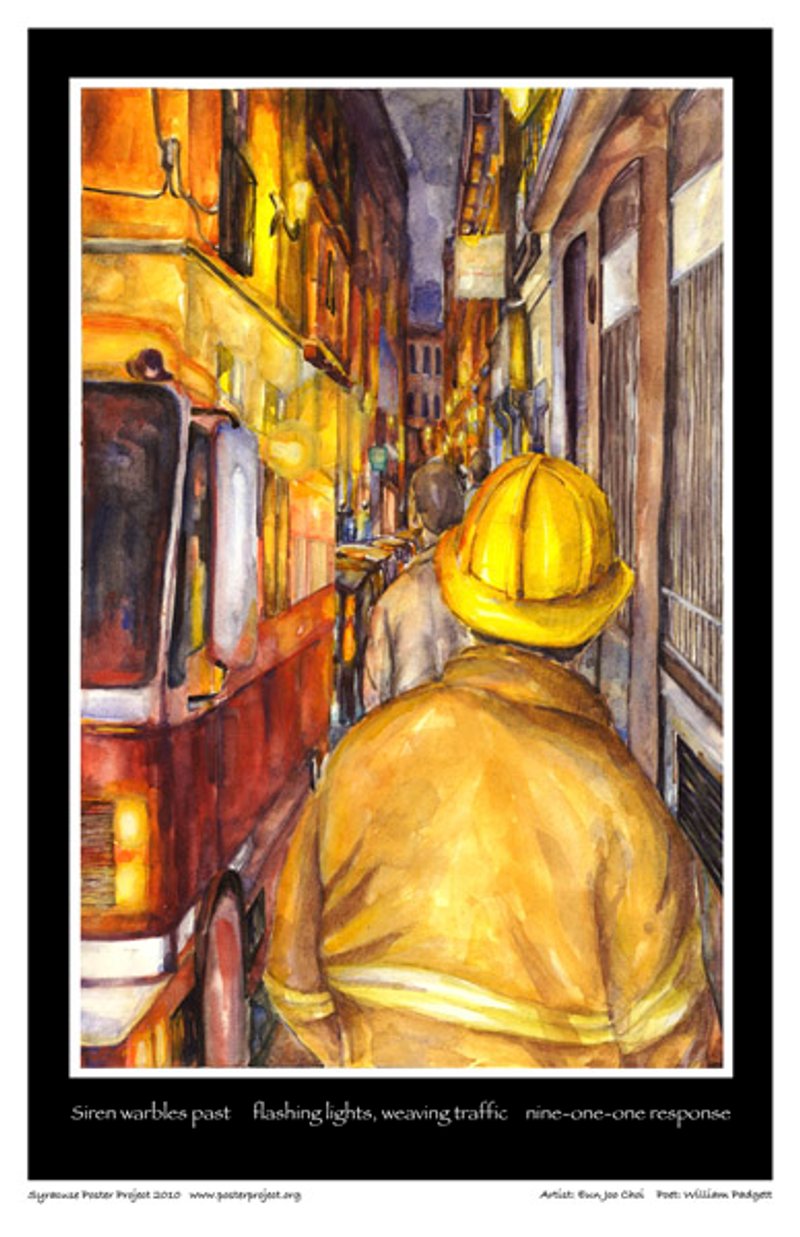
Poet
I've taught illustration and graphic design at SU for 35 years, and I tell my students to think of poetry when composing an ad, especially the headline. Both poetry and the ad are designed to evoke a response, a thought, or a feeling.
I've also lived in several cities. Downtown areas of cities are much alike in what they evoke through sights, sounds and smells. The University just moved us to Armory Square, and my work is on the upper floor, close to the road. There is a lot of sound from the street, engine noises, horns, sirens. It doesn't bother me; I know they all are responding to something urgent. I like the sense these sounds convey, the untouchable things that communicate with our ambient senses.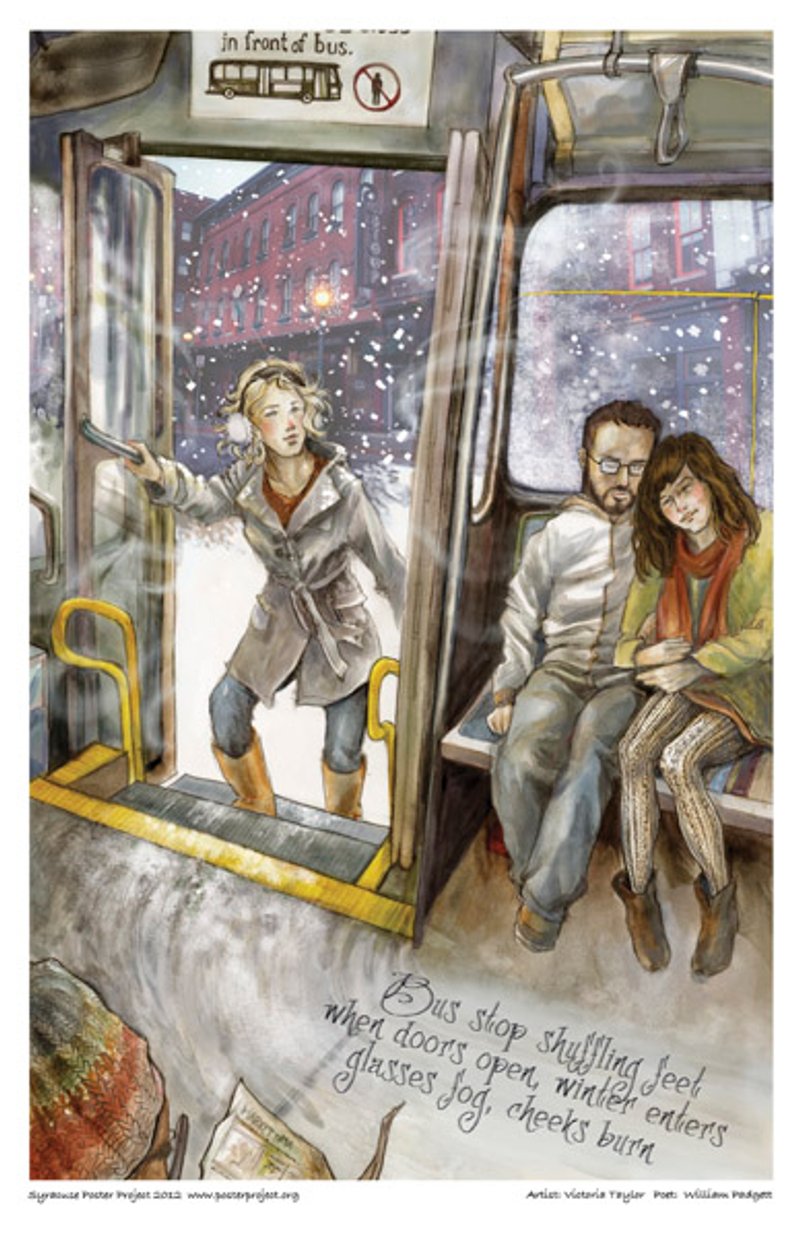
Poet
I teach communication design at SU, and now am also teaching entrepreneurship classes. I wrote this haiku after watching the students get on and off the bus to the Warehouse in winter, which is a good chunk of the time that they spend here.
Taking the bus has a way of humbling you. You are not in a car by yourself. You are with other people. You feel the contrast between the luxury of driving a car and traveling with the masses. It's like a stage. Here the weather and that stage come together.
The stinging of the cheeks is a defrosting. They don't sting when you are outside because they are numb. When you get on the bus, which is where you want to go when it's cold outside, you warm up. That stinging pain on your cheeks is a good pain because you are in a good place.